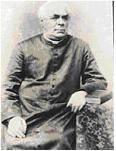Some see the ancient Greek "Father of Medicine", Hippocrates, as the first advocate of naturopathic medicine, before the term existed. The modern practice of naturopathy has its roots in the Nature Cure movement of Europe during the 19th century. In Scotland, Thomas Allinson started advocating his "Hygienic Medicine" in the 1880s, promoting a natural diet and exercise with avoidance of tobacco and overwork. The term sanipractor has sometimes been used to refer to naturopaths, particularly in the Pacific Northwest region of the United States.
The term naturopathy was coined in 1895 by John Scheel, and purchased by Benedict Lust, the "father of U.S. naturopathy".Lust had been schooled in hydrotherapy and other natural health practices in Germany by Father Sebastian Kneipp; Kneipp sent Lust to the United States to spread his drugless methods. Lust defined naturopathy as a broad discipline rather than a particular method, and included such techniques as hydrotherapy, herbal medicine, and homeopathy, as well as eliminating overeating, tea, coffee, and alcohol. He described the body in spiritual and vitalistic terms with "absolute reliance upon the cosmic forces of man's nature."
In 1901, Lust founded the American School of Naturopathy in New York. In 1902, the original North American Kneipp Societies were discontinued and renamed "NATUROPATHIC Societies". In September 1919 the Naturopathic Society of America was dissolved and Benedict Lust founded the “American Naturopathic Association” to supplant it. Naturopaths became licensed under naturopathic or drugless practitioner laws in 25 states in the first three decades of the twentieth century. Naturopathy was adopted by many chiropractors, and several schools offered both Doctor of Naturopathy (ND) and Doctor of Chiropractic (DC) degrees. Estimates of the number of naturopathic schools active in the United States during this period vary from about one to two dozen.
After a period of rapid growth, naturopathy went into decline for several decades after the 1930s. In 1910, the Carnegie Foundation for the Advancement of Teaching published the Flexner Report, which criticized many aspects of medical education, especially quality and lack of scientific rigour. The advent of penicillin and other "miracle drugs" and the consequent popularity of modern medicine also contributed to naturopathy's decline. In the 1940s and 1950s, a broadening in scope of practice laws led many chiropractic schools to drop their ND degrees, though many chiropractors continued to practice naturopathy. From 1940 to 1963, the American Medical Association campaigned against heterodox medical systems. By 1958, practice of naturopathy was licensed in only five states. In 1968, the United States Department of Health, Education, and Welfare issued a report on naturopathy concluding that naturopathy was not grounded in medical science and that naturopathic education was inadequate to prepare graduates to make appropriate diagnosis and provide treatment; the report recommends against expanding Medicare coverage to include naturopathic treatments. In 1977, an Australian committee of inquiry reached similar conclusions; it did not recommend licensure for naturopaths. As of 2009, fifteen of fifty U.S. states, Puerto Rico, the US Virgin Islands and the District of Columbia licensed naturopathic doctors, and two states (WA, VT) require insurance companies to offer reimbursement for services provided by naturopathic physicians.
Naturopathy never completely ceased to exist. Beginning in the 1970s, interest waxed in the United States and Canada in conjunction with the holistic health movement.
Today, there are nine schools of Traditional naturopathy offering certificate or degree programs accredited by the American Naturopathic Medical Accredation Board The National Board Of Naturopathic Examiners of the ANA currently recognizes two schools offering Doctor of Naturopathy Degree programs
Naturopathic Medicine is represented with six accredited naturopathic medical schools and one candidate for accreditation in North America. In 1956, Charles Stone, Frank Spaulding, and W. Martin Bleything established the National College of Natural Medicine (NCNM) in Portland, Oregon in response to plans by the Western States Chiropractic College to drop its ND program. In 1978, Sheila Quinn, Joseph Pizzorno, William Mitchell, and Les Griffith established John Bastyr College of Naturopathic Medicine (now Bastyr University) in Seattle, Washington. That same year, the Canadian College of Naturopathic Medicine was founded in Toronto, Canada. More recently founded schools include the Southwest College of Naturopathic Medicine, founded in 1992, and Boucher Institute of Naturopathic Medicine, also founded in 1992. The University of Bridgeport in Connecticut grants ND degrees through the College of Naturopathic Medicine, and the National University of Health Sciences in Illinois recently developed a naturopathic program and is currently a candidate for accreditation.


No comments:
Post a Comment